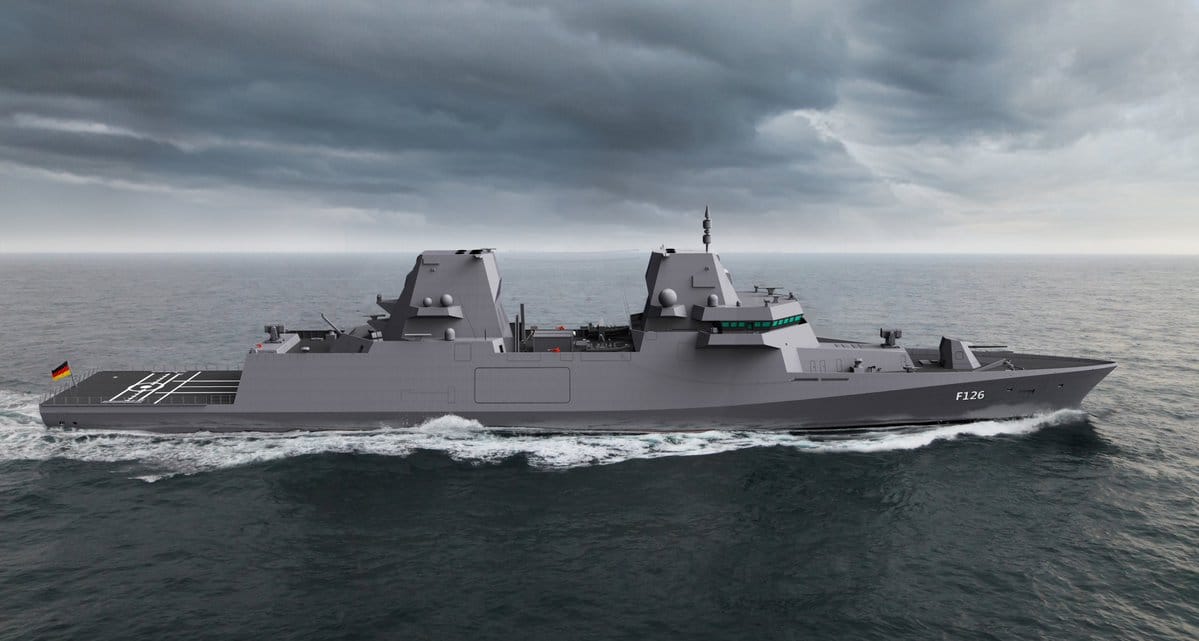P.S. why these ship classes need replacement:
A704 : Were originally built in the early 70s as civilian tankers. Bought in the late 70s and fitted with RAS gear. Both ships are single-hull tankers, and for the past decade have only been operating based on special exceptions (double-hull tankers are required EU-wide). Have been suffering machinery problems in the last couple years as well. Primary use in the last ten years was tagging off as the default supply unit operating with the NATO SNMG1 frigate group at sea, earlier also served a similar role in OP Atalanta. Crews are civilian. Ships are not armed, naval infantry Maritime Protection Element has been embarked when necessary.
A423 : Corvette-sized electronic Warfare ships built in the late 80s. Were originally designed to reconnoiter Soviet fleets in the North Sea and Baltic. Since the 90s serve as strategic reconnaissance units with secondary communications relay function. Sensor outfit is somewhat comparable to an AAW frigate, although supposedly more multi-spectrum - at its core beyond what's upgradable it still mostly mirrors the original role though. Primary use in the last twenty years has been in electronic surveillance missions in the Mediterranean (Balkans, Libya, Syria). Under current force division the navy only provides crew and ship, operations are performed by CIR as part of their Strategic Reconnaissance Command - hence CIR also providing the mission crew onboard. The ships are nominally not armed, machine guns and Stinger launchers are carried though.
A404 : Squadron tenders for boat squadrons built in the early 1990s to a heavily modified civilian design. Have served with MCM, FAC, SSK and corvette squadrons. Support group for the specific squadron is containerized, hence ships can be switched around (the ship assigned to the SSK squadron is modified). Equipped to carry command staff and slightly expanded medical support for their squadron. Considered insufficient to support the corvette squadron - as one current primary user in that function - due to limited fuel supplies and no full RAS gear. Aviation facilities in current ships are also barebone and more along the lines of a VERTREP platform. Primary use in the last 15 years has been in support of UNIFIL MTF448 (as "base ship" at Limassol) and in humanitarian missions in the central Mediterranean. Five of the ships now form a single "support squadron" for 1st Flotilla and are not directly assigned to boat squadrons.
This may be wrong, it probably is, but Wikipedia lists the Rhon class as the Type 704 and the Berlin class as the Type 702. But am I right to assume that the 707 class will be replacing the Rhon class as they are the older ships?
And will this class resemble the Berlin class? They look be of a similar displacement and Canada is building these ships as well. But you state that the concept has been changed, does this mean they intend to adapt the Berlin class or build a completely new design? And how far along is the program? 2024 is not that far into the future.
The A702 Berlin class are multi-product AORs. Different kinda thing - especially since they'd cost considerably more.
What the Navy is looking for are basically as-cheap-as-possible oilers replacing the two ships
Rhön and
Spessart in order to satisfy the NATO requirement of providing five "small logistics ships" (3 Class A702 + 2 Class A707). As usual there was some functionality creep involved, although not quite as hefty as with other projects. The original design concept was finalized in July 2019.
The A707 replacement for A704 was then tendered out, but withdrawn (this December) since initial offers would have cost 425 million Euro per ship instead of 250 million planned. In addition FSG was contesting the closed-bidder tender since they were not invited to it - applying in court that the ship are not warships in the sense of recent protectionist laws. The proposed design changes adress both issues, and it's not unlikely the rebooted new tender will be at minimum Germany-, possibly EU-wide and not limited to two specific shipyards like the first one.


